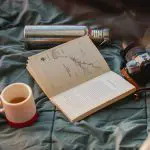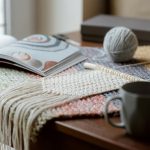Are you curious about the name of a watered silk fabric? Look no further!
In this article, we will delve into the history, characteristics, production process, and various uses of watered silk fabrics.
You’ll discover the secrets behind this luxurious material and gain a deeper understanding of its significance in the world of fashion and design.
So, grab a cup of tea and get ready to explore the fascinating world of watered silk fabrics!
Table of Contents
History of Watered Silk Fabrics
Watered silk fabrics became popular during the Renaissance era. The evolution of watered silk fabrics can be traced back to ancient China, where the art of weaving silk was highly developed. The technique of creating watered silk involved pressing the fabric with hot irons or rollers, which created a rippled or watery effect on the surface. This process was achieved by weaving the silk threads in a way that created alternating tight and loose areas, causing the fabric to shrink and create the characteristic pattern.
Watered silk fabrics held significant cultural significance during this time. They were considered a symbol of wealth and luxury, and were often reserved for the nobility and upper class. The shimmering effect of watered silk was highly valued, as it reflected light beautifully and added a touch of elegance to any garment or home decor item. Watered silk fabrics were commonly used for dresses, gowns, and curtains, and were often dyed in vibrant colors to enhance their visual appeal.
Overall, the evolution of watered silk fabrics and their cultural significance during the Renaissance era played a crucial role in shaping fashion and design trends of the time.
Characteristics of Watered Silk Fabrics
One of the characteristics of watered silk fabrics is how they shimmer when light hits them. This creates a beautiful and captivating effect that makes these fabrics stand out. If you are considering purchasing or already own watered silk fabrics, it is important to know about the different types and how to care for them properly.
Here are some types of watered silk fabrics:
-
Moire: This type of watered silk has a wavy pattern that is created through a special finishing process. It is commonly used for evening gowns and formal wear.
-
Grosgrain: This fabric has a ribbed texture that adds depth and dimension to the watered effect. It is often used for accessories like belts and trimmings.
-
Faille: Similar to grosgrain, faille has a ribbed texture but is softer and more lightweight. It is commonly used for blouses, dresses, and skirts.
-
Ottoman: This fabric has a more pronounced watered effect with larger, more distinct patterns. It is often used for upholstery and home decor.
When it comes to caring for watered silk fabrics, it is essential to follow the care instructions provided. Generally, these fabrics should be dry cleaned or hand washed with a mild detergent and cold water. Avoid wringing or twisting the fabric and instead gently squeeze out excess water. Hang to dry or lay flat on a clean towel. Iron on a low setting while the fabric is still slightly damp to maintain its luster.
Production Process of Watered Silk Fabrics
The production process of watered silk fabrics involves a series of intricate steps to create the signature shimmering effect. First, the silk fabric is carefully woven, usually using a plain weave or a satin weave to create a smooth surface. Then, the fabric is dyed using various dyeing techniques, such as immersion dyeing or resist dyeing, to achieve the desired color. After dyeing, the fabric undergoes a process called "watering" to create the characteristic wavy pattern. This is done by tightly compressing the fabric in a specific way, such as by pleating or using rollers, and then subjecting it to heat and pressure. The compression causes the fibers to rearrange and reflect light differently, creating the shimmering effect. Finally, the fabric goes through various finishing processes to enhance its appearance and durability, such as steaming, washing, and ironing. These steps require skill and precision to ensure the final product meets the high standards of watered silk fabrics.
| Dyeing Techniques | Finishing Processes |
|---|---|
| Immersion dyeing | Steaming |
| Resist dyeing | Washing |
| Ironing |
Uses and Applications of Watered Silk Fabrics
To enhance your wardrobe, you can incorporate watered silk fabrics into your clothing or accessories for a touch of elegance and luxury. Watered silk fabrics have been used for centuries and continue to be a popular choice due to their unique texture and visual appeal.
Here are some advantages and disadvantages of using watered silk fabrics:
Advantages:
- Luxurious appearance: Watered silk fabrics have a lustrous and shimmering appearance that adds a touch of opulence to any outfit.
- Versatility: They can be used in a variety of clothing and accessory items, such as dresses, blouses, scarves, and handbags.
- Breathability: Silk is a natural fiber that allows air to circulate, making it comfortable to wear in warm weather.
- Durability: When properly cared for, watered silk fabrics can last for many years, providing long-term value for your investment.
Disadvantages:
- High maintenance: Watered silk fabrics require special care and maintenance to retain their shape and luster. They should be dry-cleaned or hand-washed with mild detergent.
- Wrinkling: Silk is prone to wrinkling, so it may require ironing or steaming to remove wrinkles.
To ensure the longevity and beauty of your watered silk garments, it is important to follow the care instructions provided by the manufacturer. With proper care, your watered silk clothing and accessories will continue to add an element of sophistication to your wardrobe.
Notable Examples of Watered Silk Fabrics
There’s no denying the timeless elegance and luxurious feel of watered silk fabrics. These fabrics are known for their characteristic wavy patterns that create a subtle shimmering effect. Watered silk fabric patterns are created through a process called ‘moire,’ which involves pressing the fabric with heavy rollers to produce the distinct ripple effect. This technique has been used for centuries and is still cherished today for its unique and sophisticated appeal.
Many famous designers have embraced the beauty of watered silk fabrics in their creations. Designers like Christian Dior, Coco Chanel, and Valentino have incorporated this exquisite fabric into their collections, adding a touch of opulence to their designs. Watered silk fabrics are often used to create stunning evening gowns, cocktail dresses, and luxurious accessories like scarves and handbags. The patterns and colors of watered silk fabrics can vary, allowing designers to create diverse and eye-catching pieces.
Whether it’s a glamorous red carpet event or a special occasion, watered silk fabrics are a go-to choice for those seeking elegance and sophistication. The unique texture and lustrous appearance of watered silk add a touch of luxury to any outfit. So, if you want to add a touch of timeless elegance to your wardrobe, consider investing in some beautiful watered silk pieces.
Conclusion
Overall, watered silk fabrics have a rich history and unique characteristics that make them highly desirable in various applications.
With a production process that involves the use of heat and pressure to create the distinctive watered effect, these fabrics are known for their elegant and luxurious appearance.
From clothing and accessories to home decor, watered silk fabrics have found their place in the fashion and design industry.
Notable examples of watered silk fabrics include the famous moiré fabric and the stunning watered silk gowns worn by historical figures.
- Does Chiffon Fabric Stink - July 15, 2025
- Does Chiffon Fabric Affect the Economy - July 15, 2025
- Does Cotton Fabric Have a Nap - July 15, 2025





